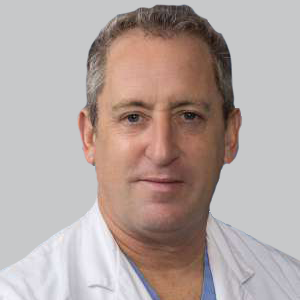Commentary
Article
NeuroVoices: Luis Felipe Tornes, MD, on Optimizing Migraine Care and Reasons for Escalation
Author(s):
The neurologist at Baptist Health provided context on identifying treatment approaches for varying degrees of migraine, the need to optimize medication use, and when patients may be experiencing more than just migraine.
Luis Felipe Tornes, MD

Migraine, the most common neurologic condition worldwide, has several possible links to other brain diseases, such as epilepsy, multiple sclerosis (MS), and fibromyalgia. Additionally, other common comorbidities of migraine include anxiety and depression, asthma, irritable bowel syndrome, chronic fatigue, sleep disorders, and stroke. In some scenarios, migraine can be mistaken for a stroke caused by bleeding on the brain, called a subarachnoid hemorrhage, which is often characterized by a sudden, very severe headache.
Over the years, there has been an increased effort to raise awareness about migraine conditions and some of the serious long-term effects it can have on patient quality of life. The overall perception surrounding migraines has changed, with more individuals understanding the neurologic components of the disease, and less who have thought their condition may be a direct “result from stress.” Above all, patients are becoming more aware about mindful of the novel therapeutic options available, like calcitonin gene-related peptide (CGRP)-targeting agents, that may help treat their condition.
In a new iteration of NeuroVoices, Luis Felipe Tornes, MD, a neurologist at Baptist Health in Florida, sat down to discuss the severity of migraine, and when it may be more than just that. He spoke specifically on the importance of obtaining detailed history records of patients and some of the common mimics seen. In addition, Tornes discussed migraine treatment as a whole throughout this point of history, including the ways we can optimize recently approved therapies and the approach to managing attacks. Lastly, he spoke on the role of new age imaging techniques and whether treating patients on a more molecular, individualized level may be on the horizon.
NeurologyLive: What are some of the major signs and symptoms that can help distinguish the severity of a migraine?
Luis Tornes, MD: It depends on where you are in your history of migraines. For patients who have never had migraines and suddenly develop headaches, there is a different approach compared to someone who has had migraines for many years and is familiar with their symptoms. If you've never had a headache before and suddenly experience a severe headache, often described as the worst headache of your life, you should be concerned, especially if accompanied by other symptoms such as weakness on one side of the body, numbness, vision loss in one eye, facial drooping, or difficulty speaking. In such cases, you should seek medical attention. For those with a long history of migraines, medical attention should be sought if there are abrupt changes in migraine frequency. People with migraines typically have a pattern, and any dramatic changes or increased frequency (e.g., from once a week to daily) warrant medical evaluation.
Are there times when patients downplay how serious their condition may be?
Yes, the biggest issue is when patients experience the symptoms mentioned earlier and do not seek medical care. It's crucial to distinguish whether the symptoms are new or part of an existing condition. Migraines can mimic other serious conditions like strokes or seizures. For example, hemiplegic migraines or brainstem migraines can cause numbness, weakness on one side, slurred speech, or facial drooping, which resemble stroke symptoms. If these symptoms are new, you shouldn't assume it's just a migraine and stay home; it could be a stroke. You need a medical evaluation to rule out serious conditions. Once a diagnosis is confirmed and the episodes recur, patients can better recognize their symptoms and avoid unnecessary ER visits. However, until that diagnosis is made, it's essential to get evaluated to ensure it's not something more serious. Migraines can mimic various conditions, making it difficult to differentiate without ruling out other serious issues first.
Do you feel that the education and awareness among the clinical community about the interplay of migraines and other neurological conditions is adequate?
The medical community is trying to improve awareness, not just for migraines but for various conditions. Recently, there has been increased awareness of strokes and the importance of acting quickly when stroke symptoms appear. However, even for neurologists, distinguishing between migraines, strokes, and seizures can be complicated due to the overlap and similarities. It's crucial to educate patients to seek medical care for serious symptoms. While education may be lacking in some areas, it is better to err on the side of caution and assume a serious condition like a stroke rather than downplay symptoms. The medical community has been working on outreach programs and marketing campaigns to raise awareness of emergent conditions and when to seek emergency care versus visiting a primary care physician or neurologist. With the availability of social media, the internet, and other platforms, it's easier to disseminate information, but there is always room for improvement.
What are the ways to optimize treatment selection for migraines?
There are many treatments available for migraine patients. Neurology frequently deals with migraines, especially in clinical settings. Almost everyone has experienced headaches, but migraines are a common reason for clinical visits. Due to the high demand for effective treatments, research and understanding of migraines have significantly increased. Although migraines are not usually life-threatening, they can be very disabling, affecting a person's ability to work, attend school, or perform daily tasks. This has a huge impact on quality of life.
One of the major advancements is the development of calcitonin gene-related peptide (CGRP) antagonists, which you may have seen advertised on TV. Our understanding of migraines has evolved, but there are still many theories and no definitive explanation for their exact cause. Continued research will help us better understand the molecular causes of migraines, allowing for more targeted therapies. As we identify specific molecules involved in migraines, like CGRP, we can develop treatments that effectively address these targets.
In addition to pharmaceutical approaches, lifestyle modifications are important for many patients who prefer not to take medications. Personalized treatment plans that incorporate both medication and lifestyle changes can be very effective.
Will we get to a point where migraines are treated on a more molecular level, incorporating more imaging techniques and modalities to further improve outcomes?
Targeting treatment to individual patients, rather than using a one-size-fits-all approach, is the goal for many diseases, including migraines. Currently, treatments for migraines often involve a trial-and-error process. For example, one patient might respond well to sumatriptan, while another might benefit more from topiramate. This process can be time-consuming and frustrating for patients, especially when it takes months to find an effective treatment.
Ideally, we would have tests or studies that could identify the best treatment for each patient from the start. For example, if we could determine that a patient's headaches are due to a specific deficiency or that they would respond best to a CGRP antagonist, we could choose the right medication immediately. This would save time and improve quality of life by reducing the trial-and-error period.
This approach is something that researchers are working towards in many fields, not just for migraines. While it is costly and challenging, the goal is to provide personalized treatment plans based on individual patient profiles. For migraines specifically, we may still be some distance away from achieving this, but it remains an ideal situation that practitioners strive for.
Transcript edited for clarity. Click here for more NeuroVoices iterations.





